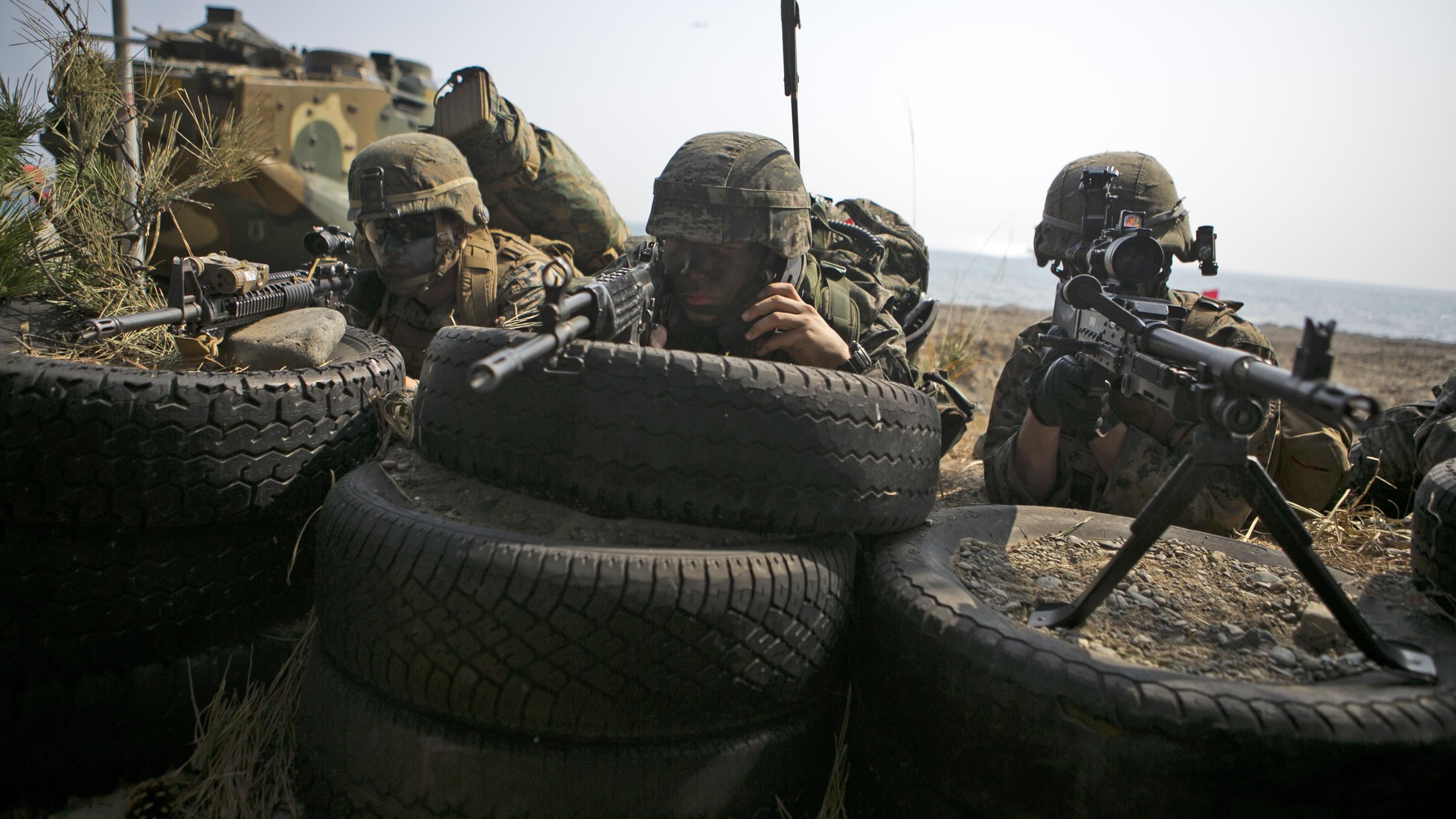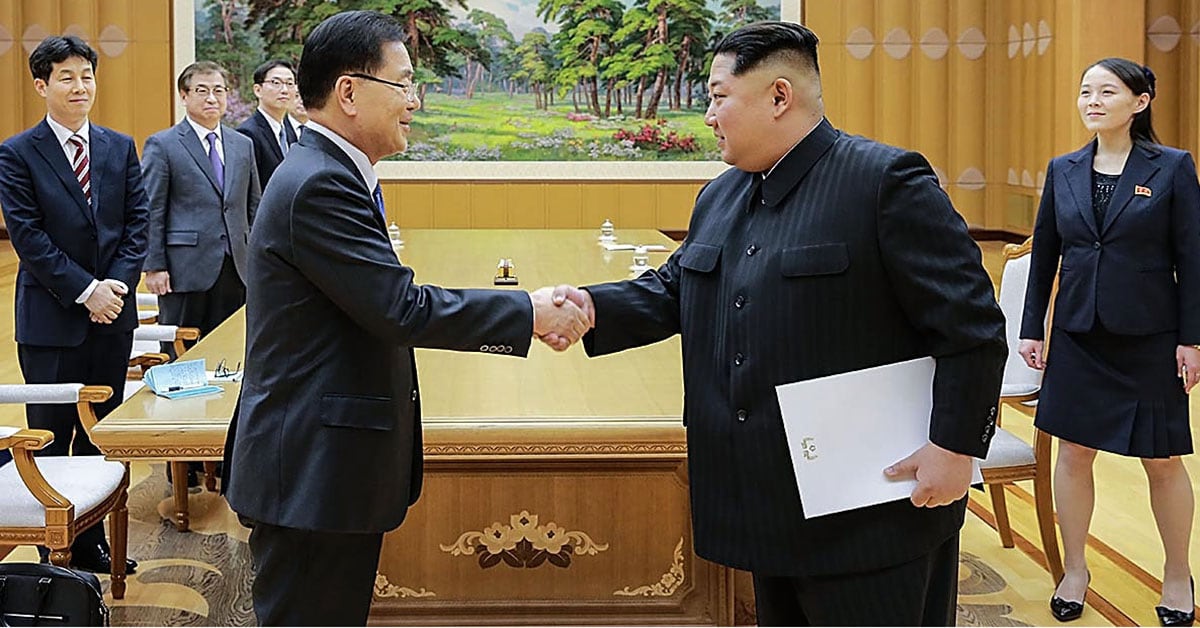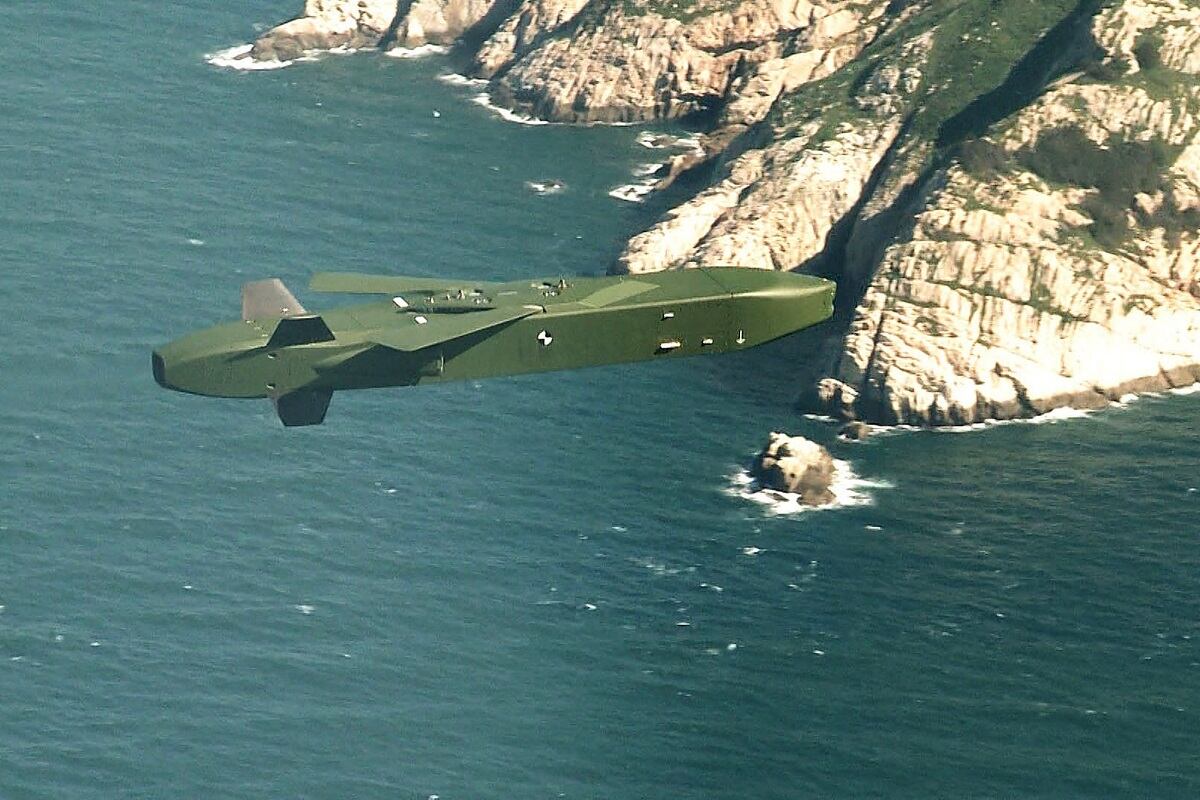Mixed signals from top political leaders ahead of a summit between President Donald Trump and North Korean leader Kim Jong Un have some questioning what is the future for the 28,500 U.S. military members and their families stationed in South Korea.
The New York Times reported Friday that Trump has ordered the Pentagon to draw up plans for reducing troop numbers ahead of the talks. Sources did not indicate if those plans included a total removal of forces.
Kim has paused his nuclear and missile tests, also placing his nuclear program up for negotiation in recent talks with South Korea. But North Korea has had a mixed history of at times making the removal of U.S. forces a precondition for any denuclearization and at other times saying it is willing to talk without troops leaving the peninsula.
And it’s not as though there hasn’t been rumbling about this from the U.S. commander in chief.
RELATED

New reports indicate that Trump was talked down from removing the troops ahead of the winter Olympics. Trump said in March that he would consider removing troops to get a better trade deal with South Korea.
And Defense Secretary James Mattis responded to media questions about force levels last week with a somewhat vague response, interpreted by some as opening the door for a reduction in forces.
“That’s part of the issues that we’ll be discussing in negotiations with our allies first, and of course with North Korea,” he said in response to a question about potential troop reductions.
“I think for right now we just have to go along with the process, have the negotiations and not try to make preconditions or presumptions about how it’s going to go,” he said.
One expert said troop removal would be “devastating” both to South Korea and across the globe for U.S. allies. Another sees the troops there, at best a single combat brigade for a conventional fight, as being purely “symbolic” and not needed.
South Korean President Moon Jae-in said this week that the U.S. forces stationed in his country are not there solely for a North Korea deterrent.

“U.S. troops in South Korea are a matter of the South Korea-U.S. alliance. It has nothing to do with signing a peace treaty,” Moon said.
But one of his advisers previously said it would be “difficult to justify” the continuing U.S. presence if a peace treaty were signed.
Bruce Klingner, is a senior research fellow at The Heritage Foundation who served as a Central Intelligence Agency deputy division chief for Korea.
“I think having U.S. military on the peninsula is the most tangible signal of U.S. resolve and commitment to our allies as possible,” Klingner said.
RELATED

Even if a treaty were signed there would have to be lengthy verification processes of the North’s denuclearization followed by discussions between the United States and South Korea, examining their security and any potential threat from an expansionist China, he said.
If there were a major reduction in U.S. forces before significant changes by North Korea it would have a “devastating impact on the security situation on the peninsula,” Klingner said.
But retired Army Lt. Col. Daniel Davis, a senior fellow and military expert with Defense Priorities, disagreed, calling the presence of U.S. forces in South Korea currently unnecessary and “purely symbolic.”
“I think we should redeploy them to the United States,” Davis said. “It’s no actual combat power.”
Davis blamed the Washington foreign policy establishment, once called the “Blob” by then-President Barack Obama, for continued thinking that troops can’t be removed.
“If we send troops anywhere, they tend to never leave,” Davis said.
He said U.S. forces in South Korea over previous decades made sense when the Republic of Korea’s military was poorly trained, manned and equipped.
“That’s no longer the strategic environment that exists at all,” Davis said. “South Korea is very capable and modern with updated military technology. They’re making their own tanks. They have a state-of-the-art air force and anti-aircraft systems.”

But, Klingner noted that South Koreans have been reluctant not only to reduce or remove U.S. troops overall but have even been concerned about the composition of forces.
The majority of U.S. service members in South Korea are Army personnel. Klingner said there were rumors in the early 2000s that those soldiers might be replaced by Marines.
That rumor caused a stir among South Koreans, who were aware that Marines tend to be expeditionary and rotate, such as in Okinawa, while soldiers tend to get into place and stay a while.
With the Marines’ deployment cycle, “it’s very easy for one unit to leave and the replacement not show up,” he said.
It’s also not as though moving nearly 30,000 troops, their families and belongings off the peninsula would happen overnight.
When serving in Germany, Davis had to close large Army installations and move those units. He estimated it would take at least a year or more to relocate the current personnel.
Todd South has written about crime, courts, government and the military for multiple publications since 2004 and was named a 2014 Pulitzer finalist for a co-written project on witness intimidation. Todd is a Marine veteran of the Iraq War.




